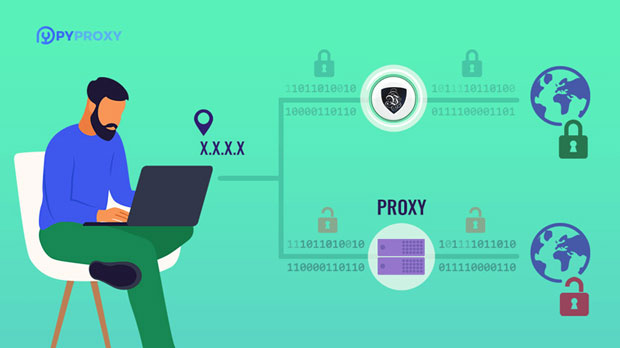PYPROXY Proxy Online is a sophisticated and reliable tool designed to provide users with secure and anonymous internet browsing. It operates through various proxy nodes spread across multiple countries and regions, ensuring that users can access the web with enhanced privacy and security. With increasing global demand for secure internet solutions, Pyproxy has expanded its support to numerous countries and regions. In this article, we will explore the countries and regions that Pyproxy Proxy Online supports, discuss the advantages of using these proxies, and delve into how users can leverage these services for improved online privacy and access. What is Pyproxy Proxy Online?Pyproxy Proxy Online is a powerful proxy service that allows users to hide their IP addresses and encrypt their internet traffic. By routing user traffic through a remote server, the proxy prevents third parties from tracking online activities. This is especially useful for users who value their online privacy, wish to access geo-restricted content, or need to bypass internet censorship. The proxy service provides access to various nodes worldwide, enabling users to browse the internet as if they were in different locations.Countries and Regions Supported by Pyproxy Proxy OnlineOne of the standout features of Pyproxy Proxy Online is its global coverage. It supports proxy nodes in multiple countries and regions, offering users a vast range of options for secure and anonymous browsing. Some of the key countries and regions supported by Pyproxy include:1. United States The United States is one of the most commonly used locations for proxy servers, offering fast and reliable connections. Users in this region can access content that is typically restricted to US residents, such as streaming platforms, news sites, and government services.2. United Kingdom The United Kingdom is another popular location for proxies, providing users with the ability to bypass geo-restrictions on UK-based services. It is particularly useful for accessing UK television shows, news outlets, and websites that are region-locked.3. Canada With its proximity to the United States, Canada offers users an alternative proxy location for accessing North American content. Users can enjoy high-speed internet connections while maintaining their online privacy.4. Germany Germany is a key location for European users. With strong data protection laws and a commitment to internet privacy, Germany-based proxies offer users a secure environment for browsing the internet.5. Australia Australian proxy nodes allow users to access content that is available exclusively in Australia. Whether it’s local news, entertainment, or services, users can enjoy seamless browsing with Pyproxy's Australian nodes.6. Singapore Singapore is a popular choice for users in Southeast Asia due to its robust infrastructure and high-speed internet connections. It’s also a gateway to accessing content from other parts of Asia and the Pacific.7. Japan Japan is one of the leading countries in terms of internet speed and technological advancements. With proxies in Japan, users can access Japanese websites, streaming services, and social media platforms with ease.8. France For users looking to access French content, including TV shows, movies, and news, Pyproxy’s French proxy nodes are ideal. France offers a high level of data privacy protection, ensuring that users browsing from this location can maintain their anonymity.9. Brazil As one of the largest countries in South America, Brazil’s proxy nodes allow users to access Brazilian content, including news, entertainment, and government services, while also masking their IP addresses.10. India India’s rapidly growing internet infrastructure makes it an important location for proxy servers. Users from India or those looking to access Indian content can benefit from the speed and reliability of Pyproxy’s Indian nodes.Advantages of Using Pyproxy Proxy NodesThe widespread availability of Pyproxy’s proxy nodes in multiple countries and regions comes with several benefits for users. These include:1. Enhanced Privacy and Security By using Pyproxy, users can conceal their real IP addresses, making it harder for websites and third parties to track their online activities. This added layer of privacy is particularly valuable for individuals concerned about data collection and surveillance.2. Bypass Geo-Restrictions Many online services impose geographic restrictions on their content. By connecting to a Pyproxy node in a different country, users can bypass these restrictions and access content that would otherwise be unavailable in their region. This includes streaming services, news outlets, and even government services.3. Avoid Censorship In certain countries, access to the internet is heavily censored. Pyproxy allows users to bypass these restrictions and access a free and open internet. Whether it’s social media platforms or news websites, Pyproxy ensures users can freely browse the web.4. Improved Internet Speed Pyproxy’s global network of proxy servers is optimized to provide fast internet speeds. Users can expect smooth browsing experiences even when accessing content from distant locations.5. Access to Region-Specific Services Some online services are only available in specific regions. For example, banking services, shopping platforms, and entertainment websites may only be accessible from certain countries. Pyproxy allows users to simulate being in different locations, thereby granting them access to these region-specific services.How to Use Pyproxy Proxy Online for Maximum BenefitTo fully leverage the benefits of Pyproxy Proxy Online, users should follow these steps:1. Choose a Server Location Select a proxy node in the country or region you want to browse from. For instance, if you want to access US-only content, choose a server located in the United States. Pyproxy’s vast network ensures you have multiple locations to choose from.2. Configure the Proxy Settings Pyproxy offers easy-to-follow instructions for configuring your device or browser to use the proxy. Whether you’re using a computer, smartphone, or tablet, setting up Pyproxy is straightforward.3. Start Browsing Securely Once the proxy is configured, you can start browsing the internet with enhanced privacy and security. You’ll be able to access content from around the world while keeping your online activities private.Pyproxy Proxy Online is an essential tool for users who prioritize privacy, security, and unrestricted access to the internet. By supporting multiple countries and regions, Pyproxy allows users to enjoy a seamless browsing experience no matter where they are located. Whether you're looking to bypass geo-restrictions, avoid censorship, or simply maintain your online privacy, Pyproxy offers a reliable and efficient solution. With its global network of proxy nodes, users can benefit from enhanced security, faster internet speeds, and access to region-specific content. As online privacy becomes more critical, Pyproxy stands as a valuable tool in ensuring a safe and unrestricted internet experience for its users.
Oct 17, 2025



































































